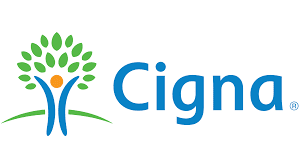Cigna vs. United Healthcare Medicare Plans
Cigna and United Healthcare are two leading Medicare insurance providers in the US, each with its own pros and cons.
They both offer Medicare Advantage (Part C), Medicare Part D drug plans, and Medicare Supplement insurance (Medigap).
In a nutshell:
- United Healthcare offers more plan options than Cigna and has a larger network of providers.
- Cigna offers, on average, lower monthly premiums than United Healthcare.

Cigna Plan Highlights
Pros:
- Coverage available in 48 states (varies by state and insurance plan)
- Premium discounts of up to 25% on select plans
- Rewards program providing up to 25% off on health and wellness products and services
- Convenient option to bundle policies
Cons:
- Premiums are up to 12% higher than those of most competitors
- Some members have expressed dissatisfaction with Cigna’s service, pointing to unresponsive representatives, claim rejections, and high out-of-pocket expenses
- Medigap plans are not available in Massachusetts or New York

United Healthcare Plan Highlights
Pros:
- Available in all 50 states (coverage varies by state and insurance plan)
- Access to over 1.3 million primary care physicians and specialists
- Benefits include virtual doctor visits, gym memberships, and vision and hearing care discounts
- Policy management can be done through the website, phone, and mobile app
Cons:
- Customers may feel overwhelmed by the company’s large size and numerous affiliates
- Premiums are significantly higher in certain regions
- Member experience ratings are only average
Cigna vs. UHC: Medicare Plan Availability
Medicare Advantage Plans
United Healthcare, the largest Medicare Advantage provider, boasts 8.9 million members. Meanwhile, Cigna, ranked seventh, aims to expand its current 600,000 memberships by 22% and enhance plan benefits through network expansion.
Both Cigna and United Healthcare offer various types of Medicare Advantage plans, including HMO plans (Health Maintenance Organization), PPO plans (Preferred Provider Organization), and SNPs (Special Needs Plans).
Medicare Supplement Plans
Cigna and United Healthcare offer guaranteed renewable Medigap policies with no network restrictions – meaning you can see any doctor who accepts Medicare.
United Healthcare offers 9 out of the 10 standardized Medigap plans, including A, B, C, D, F, G, K, L, and N. Cigna offers Medigap plans A, F, G, and N, plus high-deductible versions of G and F (in some locations).
United Healthcare provides discounts on household and electronic funds transfers, depending on your location and household status.
Cigna offers up to a 20% premium discount on Medigap plans, with an additional 5% discount if you apply online.
Prescription Drug Plans
Cigna provides three nationwide drug plan options: Cigna Saver RX, Cigna Secure RX, and Cigna Extra RX. Premiums range between $18 and $116 per month, and each plan includes the option of a $0 copay on Tier 1 generic drugs.
United Healthcare offers two national prescription drug plans and two additional state-specific plans, with monthly premiums ranging from $31 to $124.
United Healthcare boasts a wide network of in-network pharmacy locations, partnering with popular pharmacies like Walgreens and offering mail-order prescriptions through OptumRx.
Cigna vs. UHC: Medigap Plan Costs
We compared premium costs of popular Cigna and UHC Medigap plans in different states for your review:
-
Florida:
Medigap Plan Cigna UHC G $190.13 $215.16 F $238.86 $263.12 N $141.29 $183.91 A $180.62 $185.70 Sample quotes are for a 65 y/o nonsmoking male in FL zip code 32503.
-
Illinois:
Medigap Plan Cigna UHC G $137.13 $147.29 F $178.29 $192.28 N $90.62 $137.08 A $160.54 $102.76 Sample quotes are for a 65 y/o nonsmoking female in IL zip code 60629.
-
Alabama:
Medigap Plan Cigna UHC G $160.41 $157.82 F $182.68 $194.72 N $109.99 $130.98 A $173.49 $102.92 Sample quotes are for a 65 y/o nonsmoking male in AL zip code 35405.
-
Texas:
Medigap Plan Cigna UHC G $134.67 $146.40 F $221.13 $193.50 N $100.01 $105.59 A $132.65 $139.89 Sample quotes are for a 65 y/o nonsmoking female in TX zip code 77494.
Premium Analysis
In summary, our research revealed that on average:
It’s important to know that actual premiums will vary depending on your age, gender, location, and tobacco status.
Cigna vs. UHC: Extra Perks
United Healthcare Medicare Advantage plans provide annual home visits with licensed clinicians, $0 copays for telehealth, and rewards for health tasks. Dual plan members may also get allowances for healthy food, over-the-counter items, and utility bills.
Cigna offers the Healthy Rewards program, which offers up to 25% discounts on health products and services. It also provides standalone and bundled dental, vision, and hearing plans starting at $32/month. United Healthcare has a similar program called Renew Active.
Cigna vs. UHC: Ratings
Medicare beneficiaries can use an impartial rating system, the Medicare Star Ratings, to check out healthcare plans and see how well providers are doing.
According to the 2023 Medicare Star Ratings, Cigna and United Healthcare’s Medicare Advantage plans received an average rating of 4.5 out of 5 stars.
Cigna has an A+ financial rating from A.M. Best, indicating stable financial health. United Healthcare has an A rating from Moody’s and A.M. Best and an AA from Fitch Ratings.
Bottom Line
When it comes to picking between Cigna and United Healthcare for Medicare plans, there isn’t a one-size-fits-all answer. Both providers offer a range of plans, each with unique features and benefits.
Your decision should be based on various factors, including your healthcare needs, budget, and the availability of plans in your area.
Our team of licensed agents is here to help you navigate this process, making sure your chosen provider fits your needs perfectly.
Sources: UHC Medicare Plan Info | Cigna Medicare Plans | Medicare.gov
